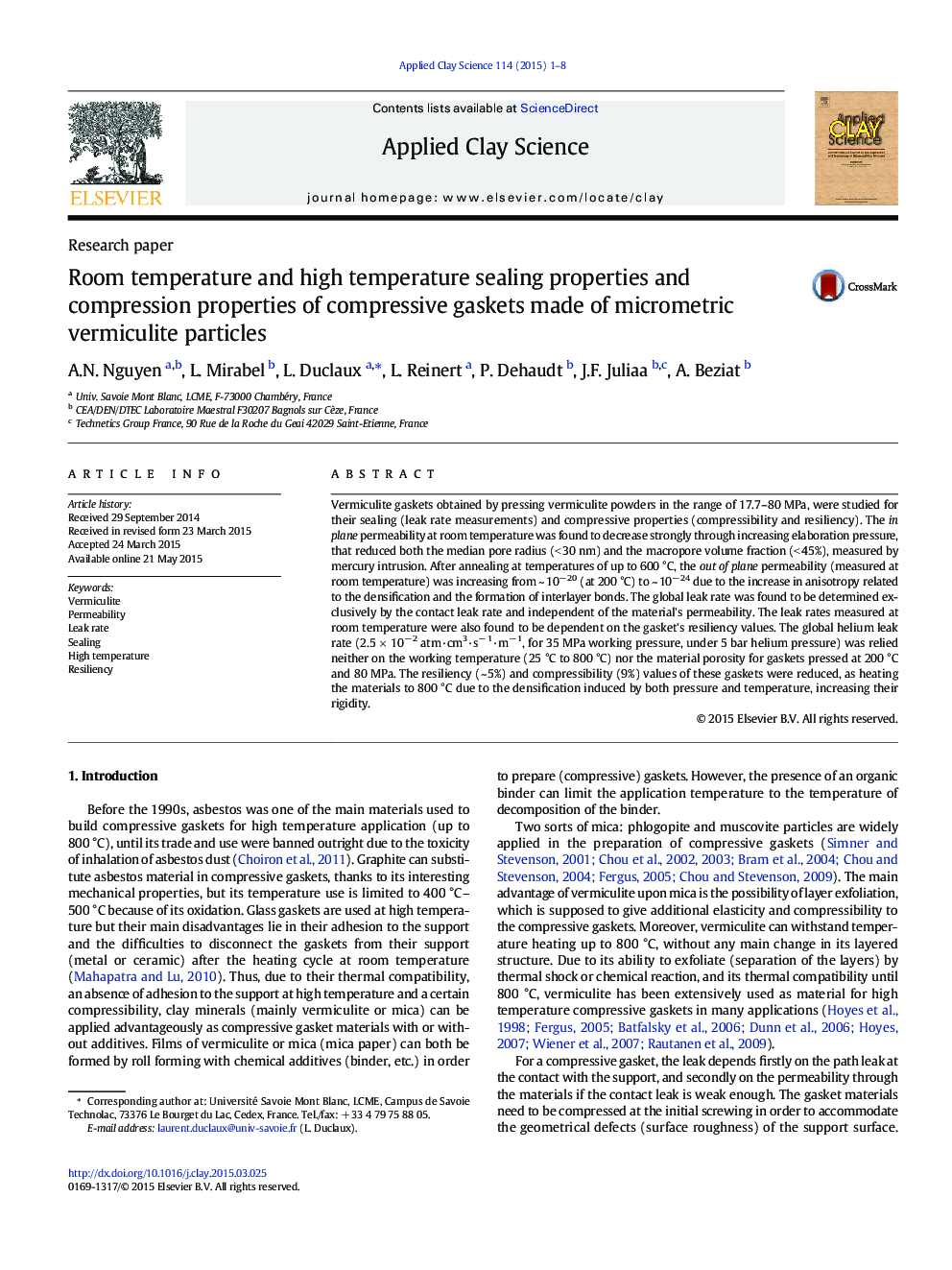| Article ID | Journal | Published Year | Pages | File Type |
|---|---|---|---|---|
| 1694347 | Applied Clay Science | 2015 | 8 Pages |
•Gaskets of sonicated vermiculite are usable up to 800 °C and detachable.•The global leak is determined exclusively by the contact leak.•The in plane permeability leak rates depend on the pressure and the porosity.•The leak rates at room temperature are related to the gasket's resiliencies.•Global leak rate: 2.5 × 10− 2 atm·cm3·s− 1·m− 1 is unchanged by heating at 800 °C.
Vermiculite gaskets obtained by pressing vermiculite powders in the range of 17.7–80 MPa, were studied for their sealing (leak rate measurements) and compressive properties (compressibility and resiliency). The in plane permeability at room temperature was found to decrease strongly through increasing elaboration pressure, that reduced both the median pore radius (< 30 nm) and the macropore volume fraction (< 45%), measured by mercury intrusion. After annealing at temperatures of up to 600 °C, the out of plane permeability (measured at room temperature) was increasing from ~ 10− 20 (at 200 °C) to ~ 10− 24 due to the increase in anisotropy related to the densification and the formation of interlayer bonds. The global leak rate was found to be determined exclusively by the contact leak rate and independent of the material's permeability. The leak rates measured at room temperature were also found to be dependent on the gasket's resiliency values. The global helium leak rate (2.5 × 10− 2 atm·cm3·s− 1·m− 1, for 35 MPa working pressure, under 5 bar helium pressure) was relied neither on the working temperature (25 °C to 800 °C) nor the material porosity for gaskets pressed at 200 °C and 80 MPa. The resiliency (~ 5%) and compressibility (9%) values of these gaskets were reduced, as heating the materials to 800 °C due to the densification induced by both pressure and temperature, increasing their rigidity.
Graphical abstractFigure optionsDownload full-size imageDownload as PowerPoint slide
